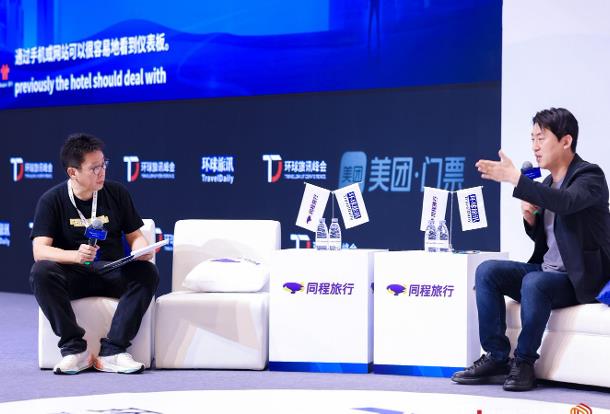ChinaTravelNews, Ritesh Gupta - Users visit a web page, and an auction takes place for the available ad space on it. And an advertiser eventually bags the right to serve the ad through RTB. Users like the ad, click on it and go deeper seeking more information.
The fascinating part of this whole exercise - the auction takes place in a span of 100 milliseconds for an impression!
This is typically how an open exchange RTB works. It is interesting to assess how the blend of intuitiveness and automation of campaign planning, execution, and reporting paves way for a meaningful impression.
RTB’s lure lies in precision targeting, based on apt evaluation of each and every impression available for auction prior to buying it.
This means a travel advertiser can reach out to a potential traveller during various stages of the booking funnel in a contextual manner.
“Users tend to spend a lot of time researching online while planning a vacation. A user does keyword search on search engines, goes through content on travel sites, checks price on airline site etc. RTB can identify the user by this series of tracks and show the user right ad at the right time. RTB has predictive targeting, which can analyzes data in real-time to predict user behavior and serve them the most appropriate ad,” says Sam Hu, GM - search marketing, Ctrip.
RTB is considered to be extremely powerful, even the user just started to plan his/ her trip a minute ago, the RTB system can detect the user and serve right ads.
Hu adds, “When a user is exploring or viewing multiple hotels, may be in dozens, the key is to how to evaluate the right ad/ related info for this specific user? This is the power of RTB. The significant technology behind RTB can calculate that one exact hotel that user wants the most, show it to the user as soon as possible to get closer to transaction, and it will also optimize revenue generation for us.”
Astute planning
The travel e-commerce category is quite competitive, and users can’t be shown general ads, says Mike Liang, co-founder of Zamplus.
Liang says one needs to assess the type of vacation a user is planning, the location where they are originating their journey from, and the destination they would travel to. Once purchasing traits are identified, then relevant ads need to be shown.
“A major component of RTB is to act on the data, and make an intuitive decision in real-time about the probability of the user converting in the near future. So whether this user is worth showing the ad or not is a critical decision. One needs to be diligent in terms of understanding the intent of the user,” explains Liang.
Hu says data is holds the key, and currently a large portion of RTB spend is based around strategies utilizing data.
He says there are two kinds of data involved, “conversion data and audience behaved data”.
Hu refers to application of data algorithmically. “This is similar in nature to SEM (search engine marketing), except it can be much more brand/ campaign specific. Audience-data-based RTB campaigns will perform much better (higher spend ROI) than media-based RTB,” explains Hu.
In our recent interview with Chinapex, the team shared that luxury hotel brand Jumeirah chose to target high net worth audience with potential intention of travelling to Dubai. The objective was to focus on cross-media audience targeting through RTB, covering high-end potential customers and also relying on retargeting to continue serving ads to online visitors after they have left the Jumeirah website. Another key aspect was to combine premium media inventory with the use of audience data.
Some details of planning were as follows:
Top five tags of converted leads - overseas travel, 5-star hotels, luxury, luxury cars, and finance.
Around 95% of audience arriving at Jumeirah site belong to 25-49 years age group.
Mainly featuring first tier cities including Beijing, Shanghai, Guangzhou, and Shenzhen.
Media targeting: mainly targeting travel, luxury, finance, and automobile vertical sites
As it emerged, key metrics were: CTR going up, CPC optimized to be only 1/5 of the client’s traditional ad channels, number of inbound leads to client’s sites getting surpassed client expectation by 56%. Also, without an increase in the search budget, the display advertising campaign through programmatic resulted in high search volume of Jumeirah keywords during the campaign. Search volumes of key words such as “Dubai 7-star hotel” and “Dubai Jumeirah Hotel” increased by 78% and 59% respectively during the campaign.
Types of data
There are categories of data - first party, second party and third party data.
So how all of such data helps in planning for RTB?
Hu says first-party data is heart.
“Everyone knows that any company not collecting and activating first-party data from their properties is basically leaving money on the table. Taking control of this first-party data should be a priority for any company today which intends to monetize, learn from, and use this asset to scale valuable audiences, deepen engagement with consumers and improve ROI across marketing efforts,” says Hu. He further adds that second-party data is another company’s first-party data that’s made directly available for other companies to use. “Say in other words, generally we consider second-party data as the data owned by media channel. For instance, we may re-target the user who click on the display ads; generate similar user in each media base on our first-party data.”
And third-party data can bring in extra potential clients/ consumers via similar audience across different industries. “For example, we can leverage the data collected from other industry, such as business portals, to OTA by cookie mapping to further drive business results across different clients,” says Hu.
For its part, Zamplus, which has an investor in Ctrip.com, set up the China Big Data Union last year. This alliance features over 50 entities from an array of sectors. The list includes Ctrip.com, LY.com, China Eastern Airlines, China Telecom, JinJiang International etc. The objective is to facilitate trading of user data.
Optimizing spend
Hu also shared that RTB can use the data recorded in the system to optimize CTR/ CPC.
“Besides, RTB can synchronize with the market trend to use the most appropriate price to bid for ad space in the on-line platform. Therefore, no matter how much budget the advertiser has for specific marketing campaigns, RTB can make sure every cent is used effectively and efficiently. Moreover, RTB can meet different goals of campaigns, optimizing on CPM (cost per impression)/ CTR (click through rate)/ CPC (cost per click) for branding advertisers as well as on CPA/CPL (cost per acquisition/cost per lead) for performance-driven advertisers,” shared Hu.
Liang says with RTB, it is important to work out economics of the bidding as how much should you pay needs to be evaluated. As much as it’s about displaying the right ad at the right time, it’s also about finding the right price. One needs to be judicious with working out the expenditure incurred on an impression, and its value to target the user who is transacting with you. As for attribution, last click being the clincher isn’t an appropriate way to assess the efficacy of campaigns. One needs to expose the customer to relevant ads across channels during various phases of the journey.
Being dynamic
The content of the ad or message is tailored at the point of ad delivery, shared Liang.
“It’s a dynamic exercise. As for a creative that is shown to a user, the adaptation is also done in real-time,” he says.
According to Liang, the choice is between – the general layout/ template with a basic design, then specific product the consumer may be interested in, say flights or hotels, and the last part is the phrase of the message (discounting, seasonality etc.). “So when the timing of the campaign is worked out, the planning includes assessment of the location, destinations targeted, point of interest etc. and as the consumer’s purchase journey shapes up, right ad is served.”
Hu says there are several dimensions advertisers can optimize for their campaigns: the overall consumer purchasing process (ranging from landing on the websites to browsing through all available products and placing orders), ad creative, clear objective of each campaign (whether the KPI is CPM/ CPC/ CTR or cost per acquisition/ cost per lead, etc.), and the overall quality of website design.
“In addition, how to make sure the online-to-offline process can be made as smooth as possible for the consumers is also significant in improving overall business result with RTB technique applied in on-line campaigns,” says Hu.
Liang says the company worked on a campaign in May this year, focusing on the user behavior and intentions. “Not only did we look at the user’s behavior to predict their likelihood of purchase, but we also considered the type of products they were interested in, including their price range, to optimize the creative and bid prices. By using the data to segment the user, optimize the price and creatives.”
It is also important to assess where RTB isn’t really effective.
Liang says the limitation of RTB would be focusing on it for brand advertising. An advertiser might run into some issues with exchanges (limitations would the quality and size of traffic available for targeting in RTB), if the plan is to create awareness rather than performance-oriented goal.




